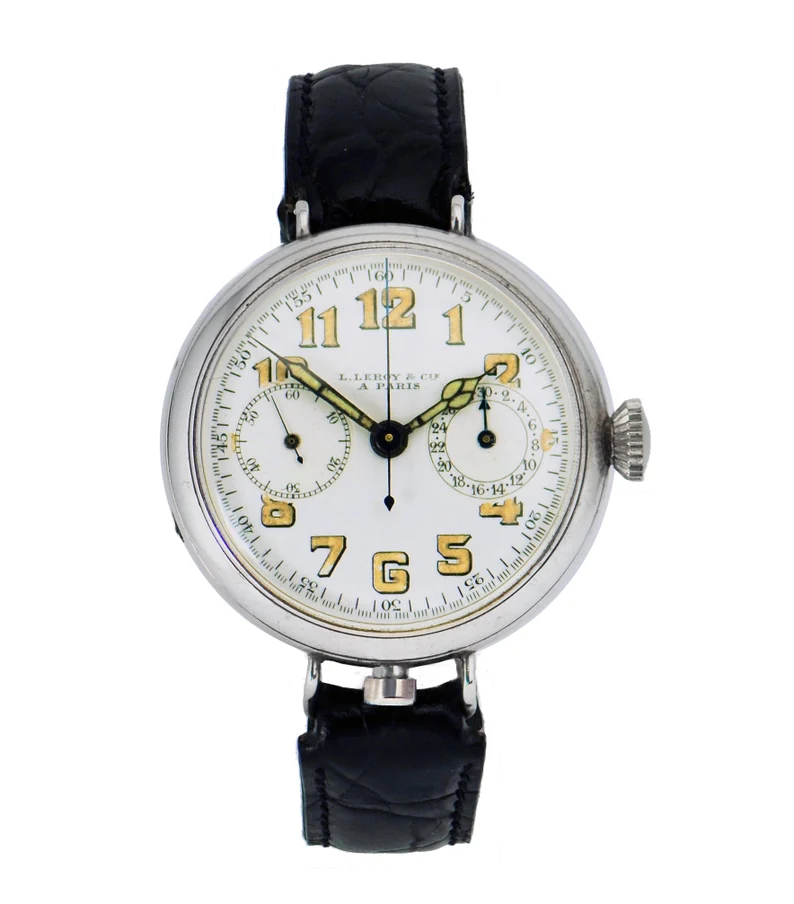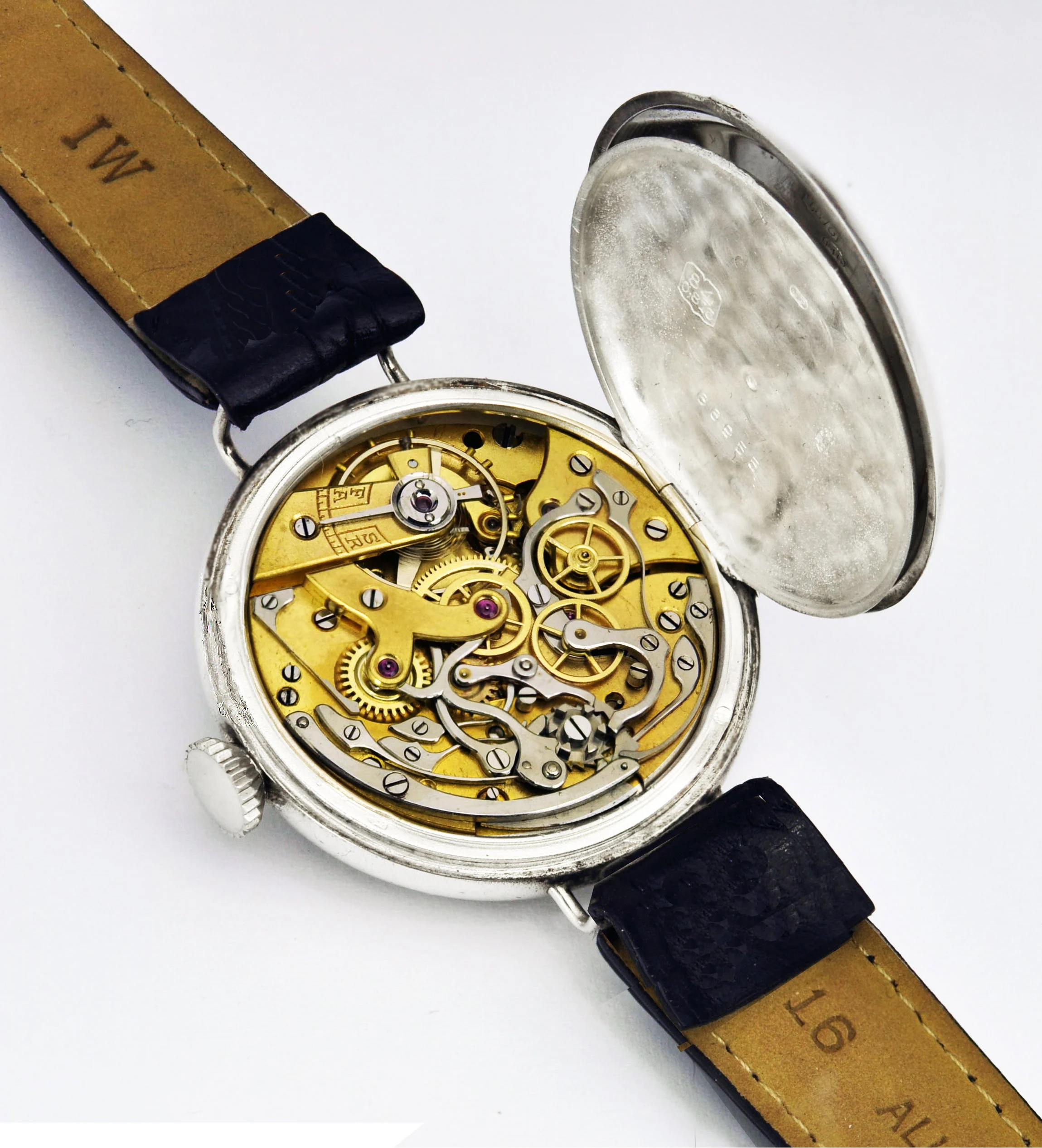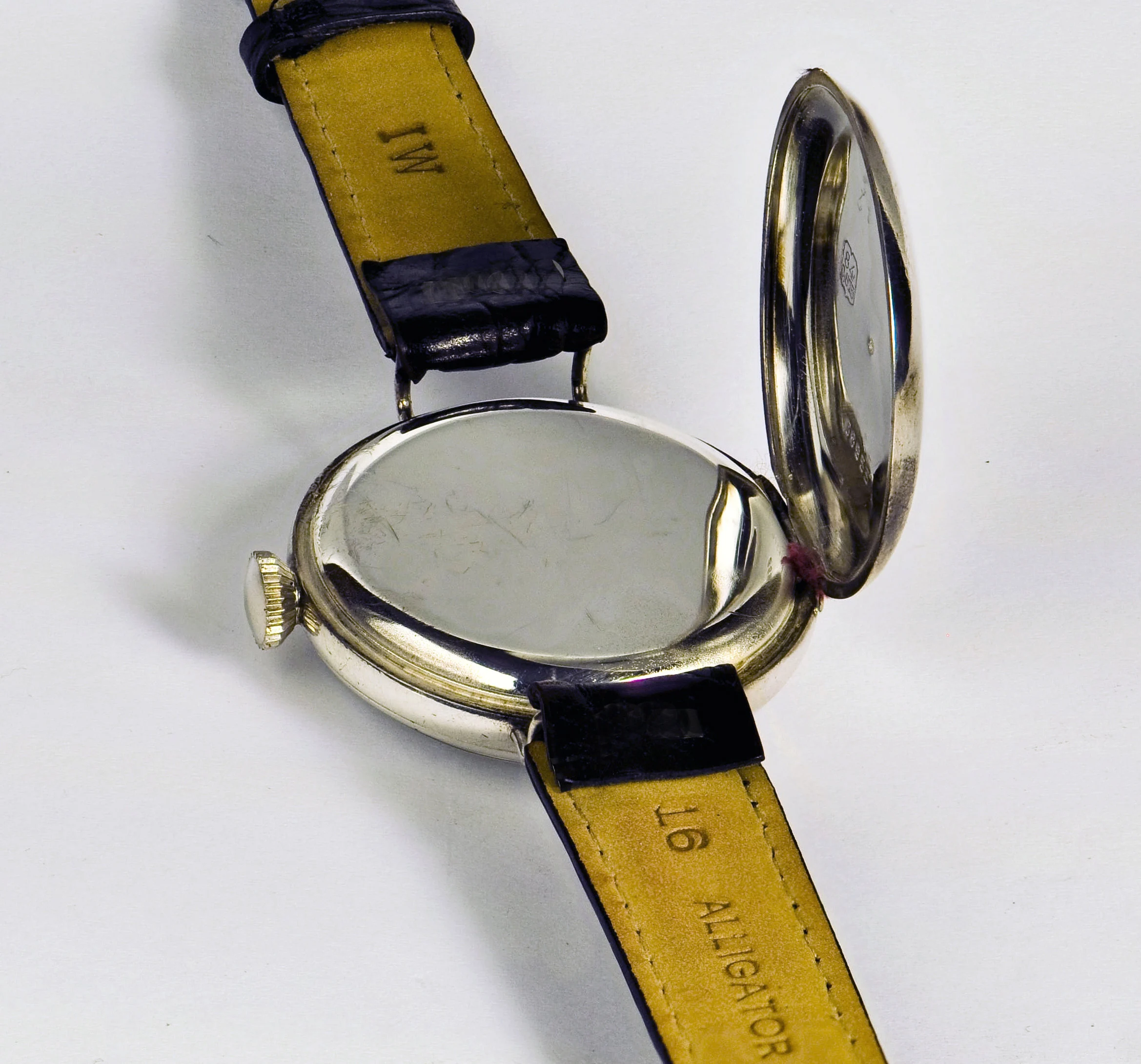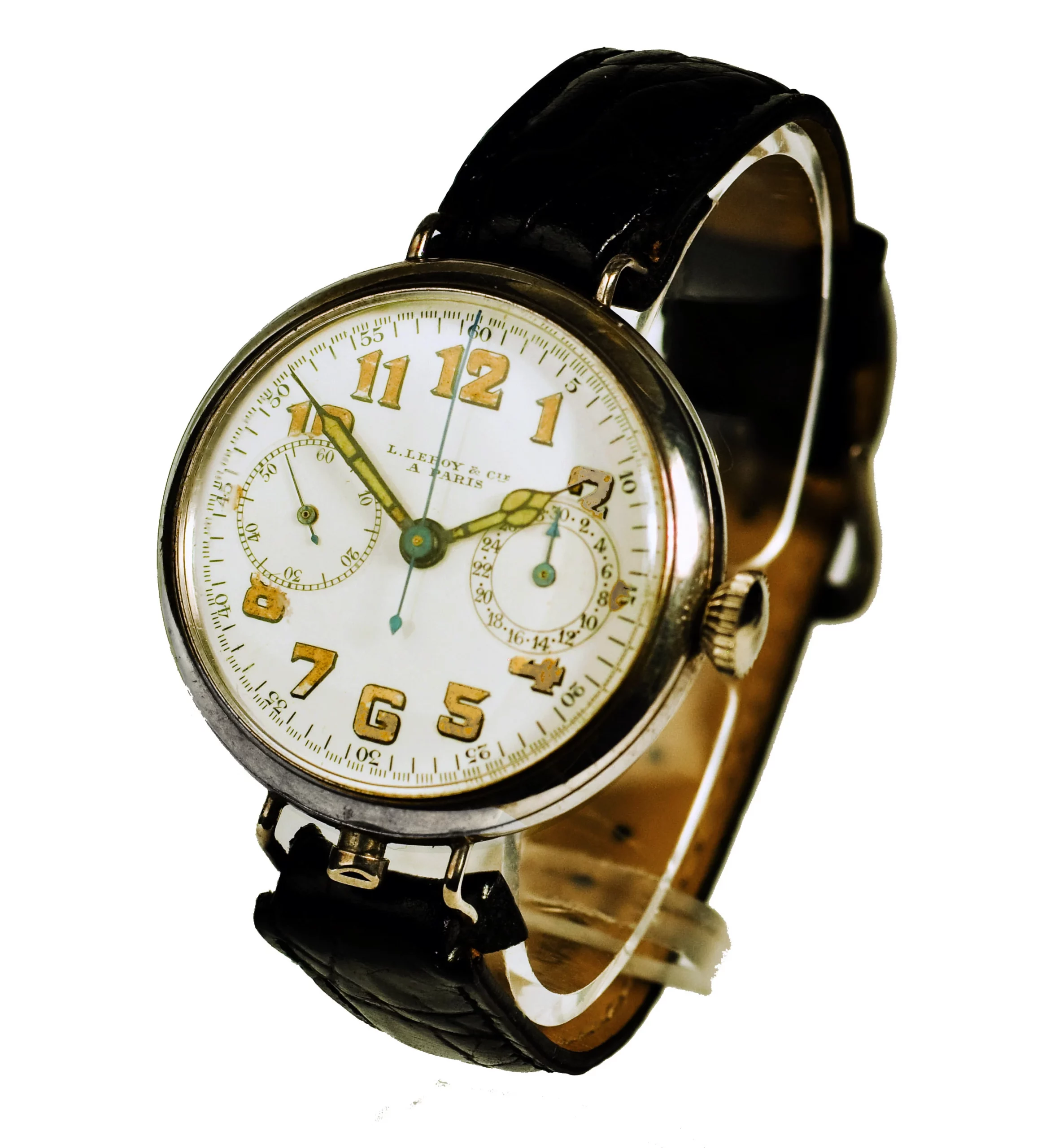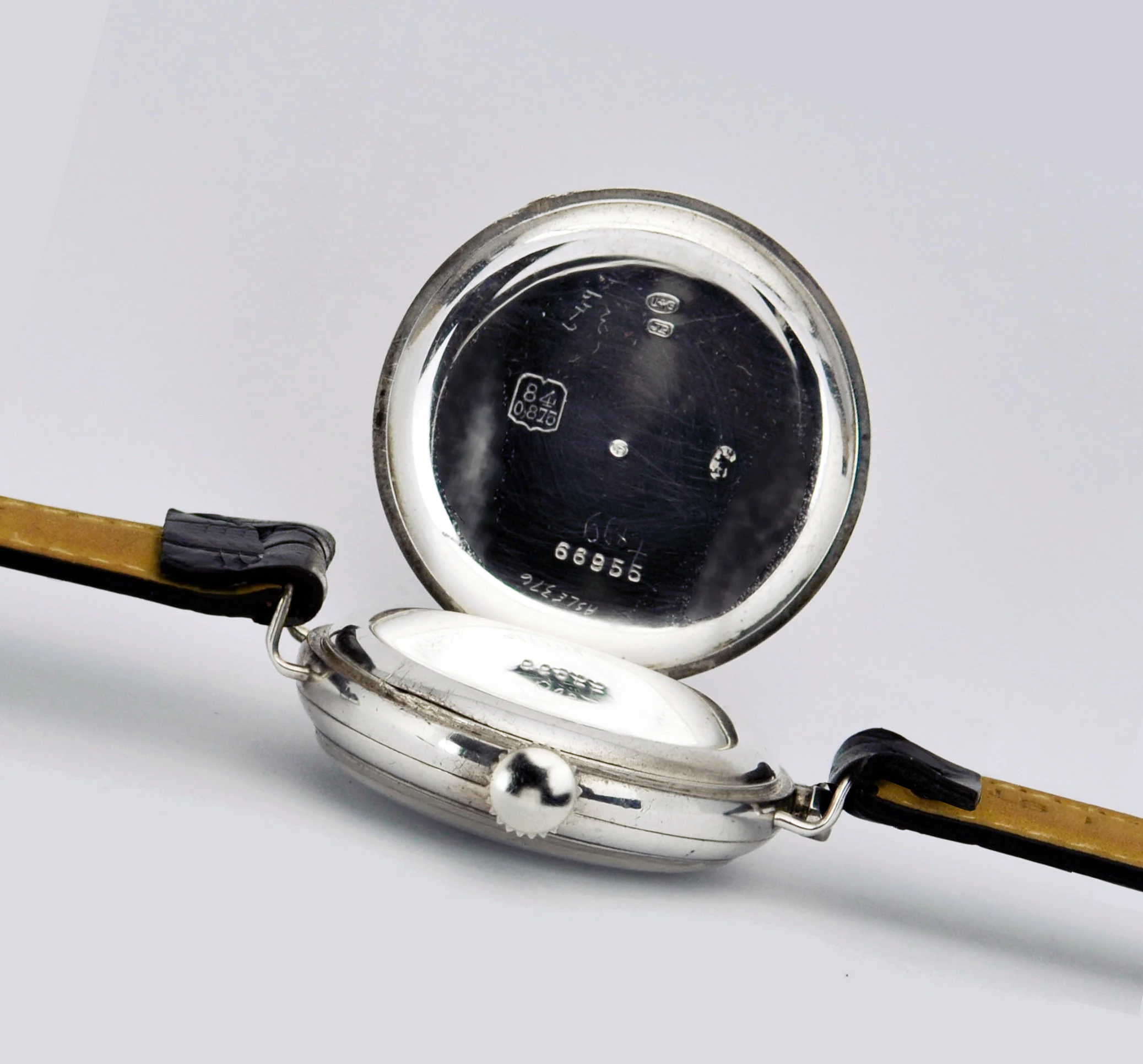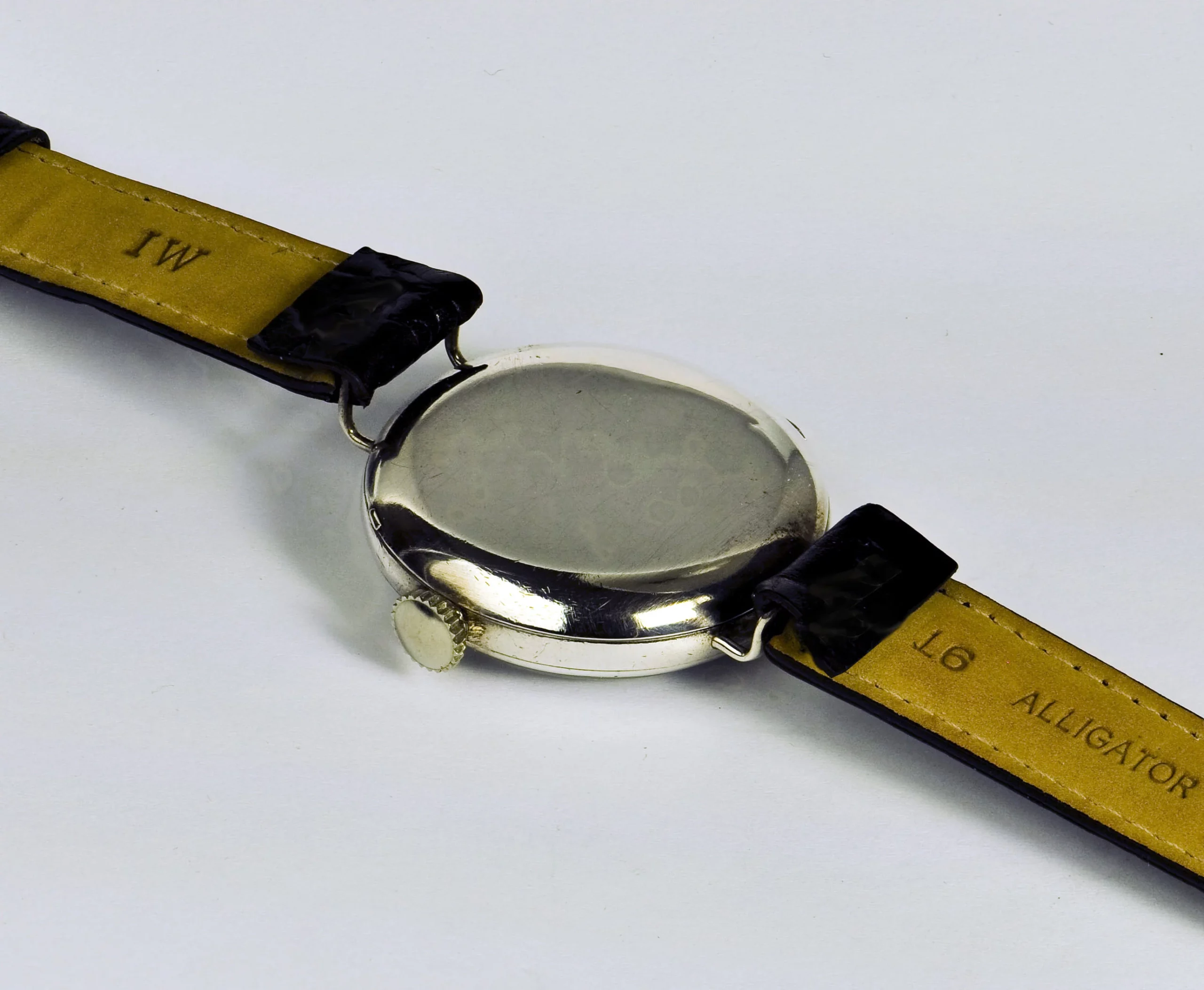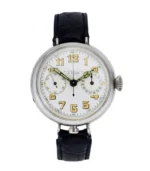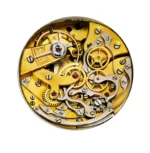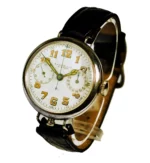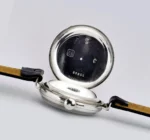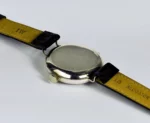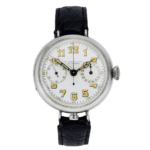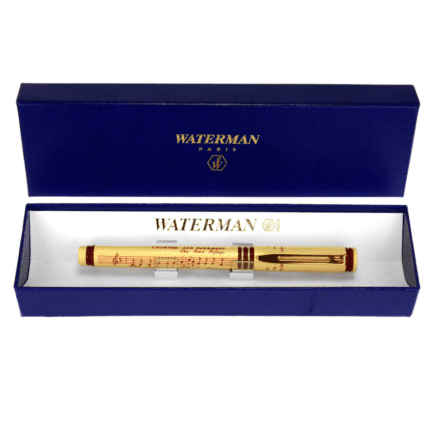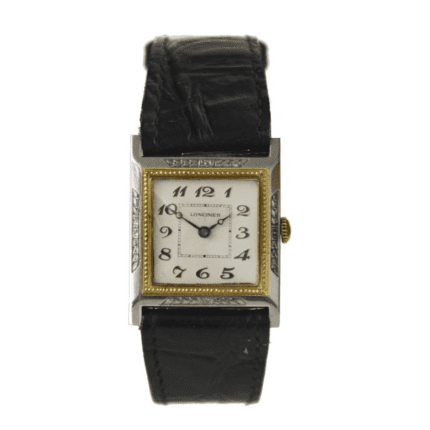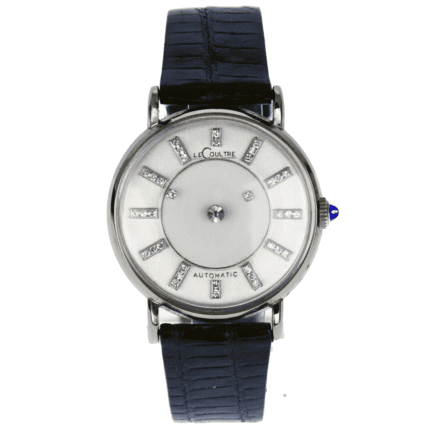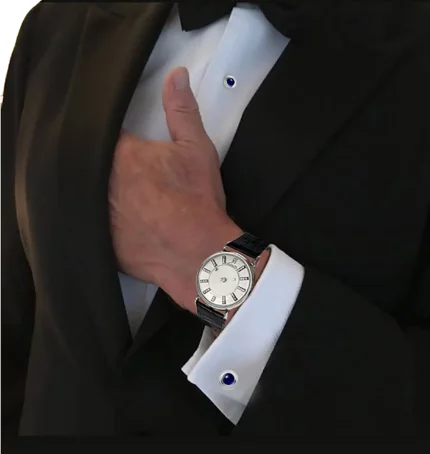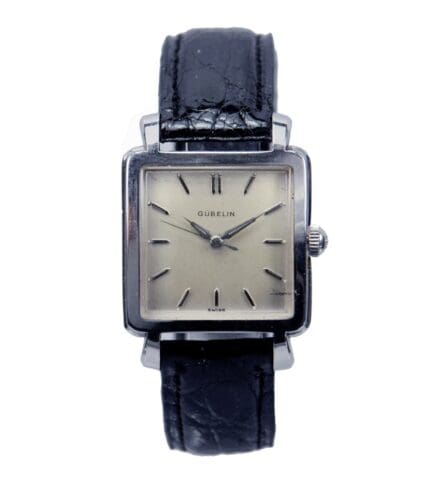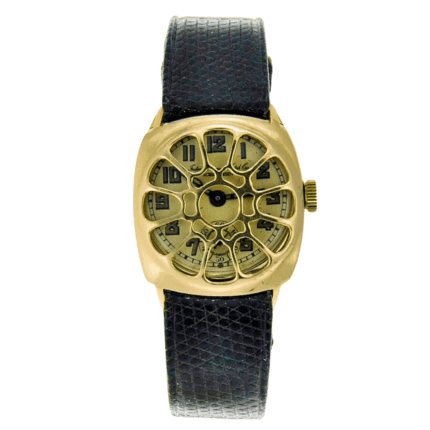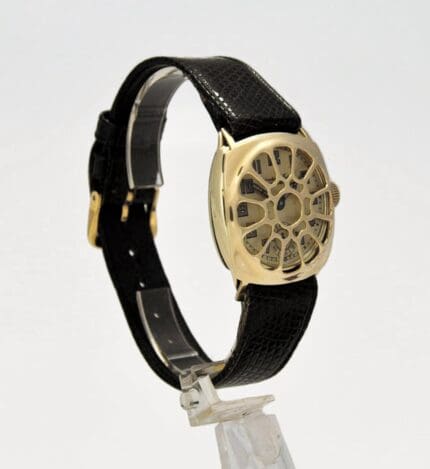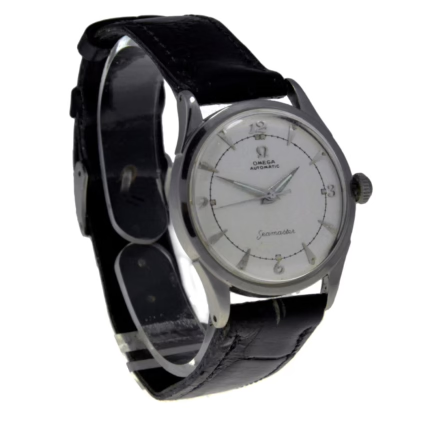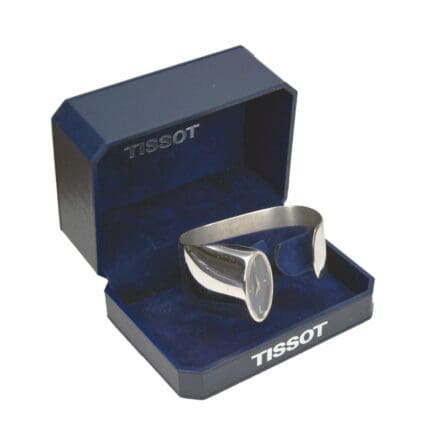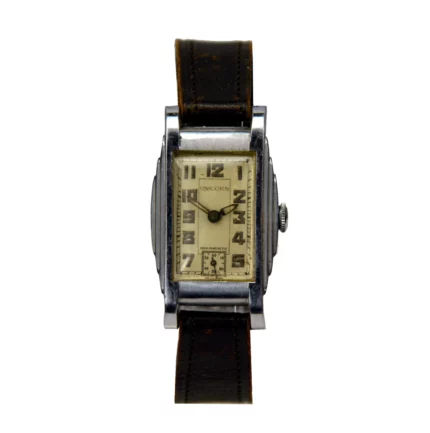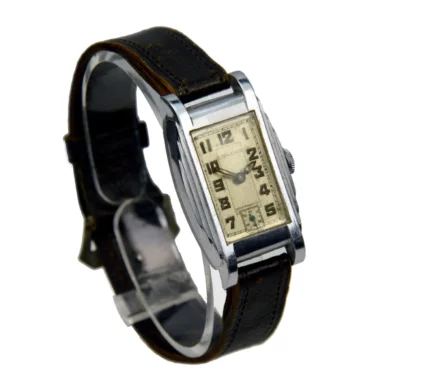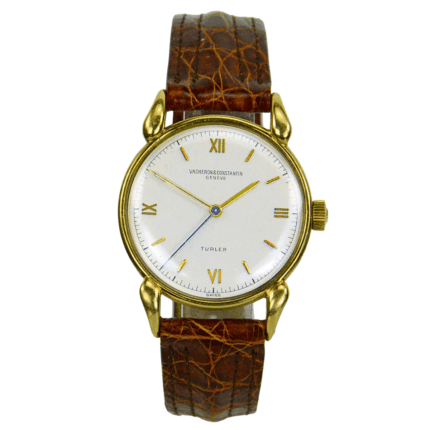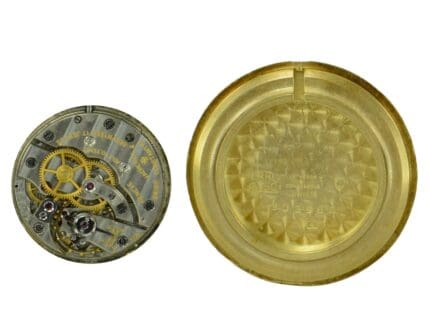Exceedingly Rare and Exceptional, Museum Quality ** L.Leroy & Cie Sterling Silver “Monopoussoir” (single button) Chronograph Wristwatch, France 1915 **
This masterpiece, the L.Leroy & Cie Sterling Silver “Monopoussoir” Chronograph Wristwatch, not only embodies the pinnacle of French watchmaking tradition but also shares an illustrious heritage with the legendary Patek Philippe. It hails from the same esteemed lineage that nurtured the genius of Adrien Philippe, the founder of Patek Philippe, who honed his craft at Leroy before journeying to Switzerland and joining forces with Antoine Norbert de Patek.
In the aftermath of the French Revolution, Leroy ascended to unparalleled prominence, earning prestigious titles such as “Watchmaker to Her Imperial and Royal Highness Madame Maria Letizia Bonaparte,” Mother of the Emperor…and garnering patronage from luminaries which included Napoleon Bonaparte himself as well as his brother Jerôme, who all commissioned watches and clocks from Leroy.
Leroy’s reputation for excellence likewise extended beyond the aristocracy, with its timepieces coveted by ranking military officers and acclaimed with gold medals at the Paris Exhibitions of 1798, 1819, 1823 and 1827.
Ever pushing the envelope of Watchmaking Art, in 1867 Leroy made a watch with nine complications that impressed watch enthusiasts around the World, and in particular the Russian Count Nicolas de Nostitz who decided to order an even more complicated watch from Leroy with 11 complications. That watch then was presented at the 1878 Universal Exhibition in Paris and subsequently delivered to Count Nostitz.
Then, in 1896, after the Count‘s death, watch aficionado Dr. Antonio Augusto de Carvalho Monteiro acquired the watch… only to ask Louis Leroy to add even more complications to it! This new watch – “Leroy 01” which boasted 24 complications – was unveiled at the 1900 Paris Universal Exhibition, where it won the Grand Prix. In fact, the Leroy 01 remained the world’s most complicated watch until 1989, when it ceded that honor to the Patek Philippe calibre 89.
- Case: Sterling Silver, fully hallmarked
- Dimensions: 38.5mm (excluding the winding crowns) x 45.5mm (lug to lug)
- Movement: Top Quality gilt Lepine design, all elements finely beveled, execution on a par with Patek Philippe and Audimars Piguet… the latter a favored provider of raw movements for Leroy during the 20th century
- Dial: Porcelain enamel with luminous skeleton numerals, fully signed L.Leroy & Cie Paris
- Condition: Impeccable. Fully serviced by Master Swiss watchmaker
Shipping Worldwide via Courrier Service. Duty-Free Shipping within Europe.
Payment: If you prefer to pay by bank transfer or lay-away, please send us a message. Likewise, if check-out proves unable to process your credit card.
L. Leroy & Cie
The History of L.Leroy & Cie, alongside the likes of Patek Philippe and Breguet who in their day fell in amongst the Company’s principle competitors, is one of the most glorious ones within the “Story of Watchmaking”.
In name, the dynasty began with Julien Le Roy (1686-1759), and subsequently continued with his son Pierre Le Roy (1717-1785), each in turn “Watchmaker to the King France”.
The eighteenth century, Age of Enlightenment, was a time of great innovation. Scholars, philosophers, artists… and amidst them brilliant persons issued from the watchmaking milieu such as Jean-Jacques Rousseau)… shared and compared ideas as well as worldviews. Within the process they also brought about great changes in the cultural and scientific understanding of the peoples as well as Royal Courts of Europe… particularly in France and England.
Thus in 1747, deeply immersed in this profusion of new ideas, 16 year old Basile Le Roy (1731 – † Year XI of the French Republican Calendar), arrived for an eight year apprenticeship at the workshops of Joseph Quétin, Master Watchmaker in the Paris Corporation. However Basile, the son of a woodcutter, bore a family name that already was synonymous with watchmaking genius… plus his apprenticeship contract bore the endorsement of Pierre Le Roy.
Interestingly, the annals of watchmaking history include a disproportionate number of watchmakers named “Le Roy” or “Leroy”… several dozen during the 17th through 19th centuries. Yet, most of them appear to descend from unrelated families of the same name. Hence, remarkably, probably not a mutual gene pool that tied them to one and another, but rather their shared watchmaking heritage and pooled expertise… reinforced by the intensive level of collaboration fostered by the Paris watchmaker guild!
Therefore, whilst the spiritual origins of L.Leroy & Cie clearly reach back to dynasty founders Julien and Pierre Le Roy, the Company’s “corporeal” origins solely can be dated to 1785, in which year Charles, with the support of his father Basile Le Roy, opened his workshop in the Galerie de Pierre within Paris’ Palais-Royal.
From its Royal Palace location, this new workshop immediately attracted the aristocracy’s favor; so that amongst the Company’s prominent clients was none less than the Queen Marie Antoinette.
Soon thereafter, revolution gripped France, and a period that historians refer to as “the Terror” ensued. This definitely was not a propitious time for Kings, nor for a “Watchmaker to the King”, or even for anything with even remotely regal overtones; furthermore, to additionally complicate matters, in French the term “Le Roy” means literally “The King”!
Notwithstanding, by 1794, political tensions began to subside… And the quality of the timepieces produced in this Palais-Royal workshop – since renamed “Leroy” – was quickly recognized by the new leaders in the capital.
Indeed, following the French Revolution, Leroy was considered the most prestigious watchmaker of the period. Named “Watchmaker to Her Imperial and Royal Highness Madame Maria Letizia Bonaparte”, the Emperor’s Mother, and many other leading personalities… including Napoléon Bonaparte himself, and his brother Jerôme… all commissioned watches and clocks from Leroy. Leroy also became the leading clock and carriage clock producer, with his production quickly snapped up by ranking military officers in the Napoleonic campaigns, as well as winning gold medals at the Paris Exhibitions of 1798, 1819, 1823 and 1827.
Additionally, in June 1808, Leroy was granted the title of “Official Chronometer Maker to the French Navy”… a role the Company would retain all the way to 1988, at which time mechanical watches finally were displaced by electronics.
Then, in 1863, Charles Leroy’s descendants opened the Leroy Watch Company shop in London at their famed Bond Street address, and became official watchmaker to Queen Victoria… an enormous privilege, in particular for a foreign firm. Notably, in 1899, Queen Victoria ordered an exclusive gold and enamel wristwatch (!!!) from the Leroy Watch Company, so that the House also distinguished itself amongst pioneer wristwatch makers.
During this important period in the Company’s history, their clients notably included the Emperor of Brazil, Napoleon III, Eugenia the Empress, the Iranian Shah and the Queen of Spain.
By this time Paris had become the “de facto capital” of Europe, and the firm’s ownership had passed to family descendent Louis Leroy (1860-1935), who in 1899 transferred the offices of L.Leroy & Cie, successor to the “Ancienne Maison Le Roy et fils” to prestigious Boulevard de la Madeleine and came to be the most recognizable watch brand. Soon named official watchmaker to the Russian imperial family, Leroy received the order from Admiral Rimsky-Korsakov to equip the Imperial yacht with its timekeeping system.
Over the years, L.Leroy & Cie continued to accumulate numerous watchmaking prizes and honors. However, while the Company handily traversed the French Revolution, the “Quartz revolution” of the 1970s took a great toll.
Today Leroy, again a rising watchmaking star, is deploying two new lines each based on its own new Manufacture-made chronometer movements… The first with prices between about $150,000 and $250,000 and the other for around $35,000.
The firm’s focus is “chronometric precision”, and to that end “aiming for the ultimate degree of excellence in finishing, reprising methods that have been extinct for two centuries.”


